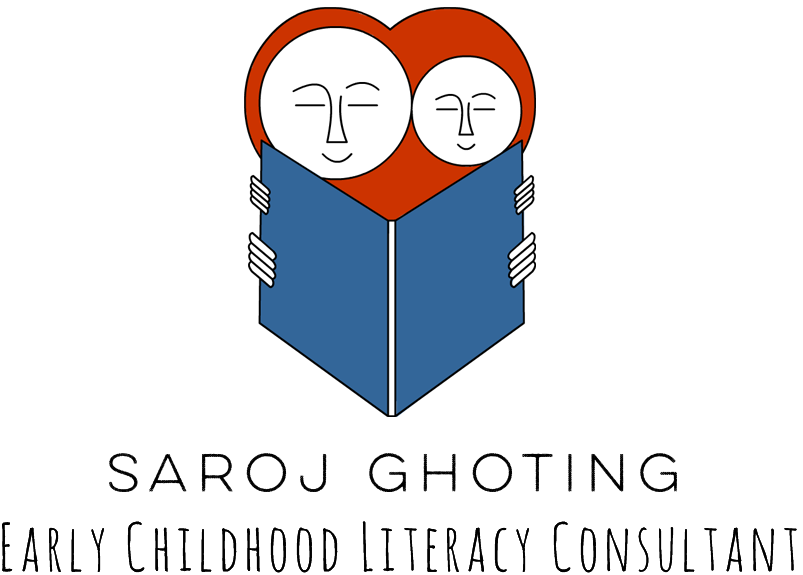Craft: Give a piece of paper and crayon or marker to each child and adult. Each person can draw an oval for the body of the mouse. For the ears make an M or m. Let's practice making an M in the air with our hand and arm.Early Literacy Aside--Example: Don't worry about if your child does this exactly right or not. Enjoy making the mouse and help him squeak and talk. You can also talk about the shapes your child is drawing. Seeing and making shapes helps your children recognize letters as well.
Is Your Mama a Llama? by Deborah Guarino
 Early Literacy Aside--Explain:The ability to hear and play with the sounds of words, as in rhyming, is an important skill for reading. To recognize these rhymes and how words are related by sound is part of what educators term phonological awareness and will help your children later sound out words.During the storytime, read the book Is Your Mama a Llama? by Deborah Guarino
Each page describes the animal that might be llama's mother. Let's guess what will come on the next page. I will emphasize the word that will rhyme on the next page. For example, if I say now, guess what animal we will see. The author gives us other clues, like brown and moo. So, we know the animal will rhyme with now is COW!
Early Literacy Aside--Example: Some books, like this one, use rhymes in a playful way. Playing with rhyming words is one good way to help children hear the smaller sounds in words which will later help them sound out words when they learn to read.
Early Literacy Aside--Explain:The ability to hear and play with the sounds of words, as in rhyming, is an important skill for reading. To recognize these rhymes and how words are related by sound is part of what educators term phonological awareness and will help your children later sound out words.During the storytime, read the book Is Your Mama a Llama? by Deborah Guarino
Each page describes the animal that might be llama's mother. Let's guess what will come on the next page. I will emphasize the word that will rhyme on the next page. For example, if I say now, guess what animal we will see. The author gives us other clues, like brown and moo. So, we know the animal will rhyme with now is COW!
Early Literacy Aside--Example: Some books, like this one, use rhymes in a playful way. Playing with rhyming words is one good way to help children hear the smaller sounds in words which will later help them sound out words when they learn to read.
Maisy Big, Maisy Small by Lucy Cousins

Submitted by Ellen Abramson, Fairfax County (VA) Public Library System
This Is the Way We Wash Our Face
Song: This Is the Way We Wash Our Face (Sung to the tune of Here We Go 'Round the Mulberry Bush)
Let's sing this song and tell a little story about how we take a bath.
"This is the way we wash our face (actions to words to all these)
shampoo our hair scrub our skin dry with a towel, etc. Early Literacy Aside--Example: This song helps us learn different vocabulary words about bathtime, like shampoo and scrub. I hope you will talk about this when you take a bath tonight. What other words can you come up with? Talking about interesting, fun words like this will help your children recognize words later on when they read them.
Submitted by Stacey Harwood, Henrico County (VA) Public Library, Twin Hickory Branch
Let's Go Froggy by Jonathan London

Submitted by Charles Nagel, Chesterfield County (VA) Libraries
Little Bunny Foo Foo: Told and Sung by the Good Fairy by Paul Johnson
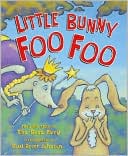
Submitted by Jackie Anas, Portsmouth (VA) Public Library
Making Gingerbread Fingerplay
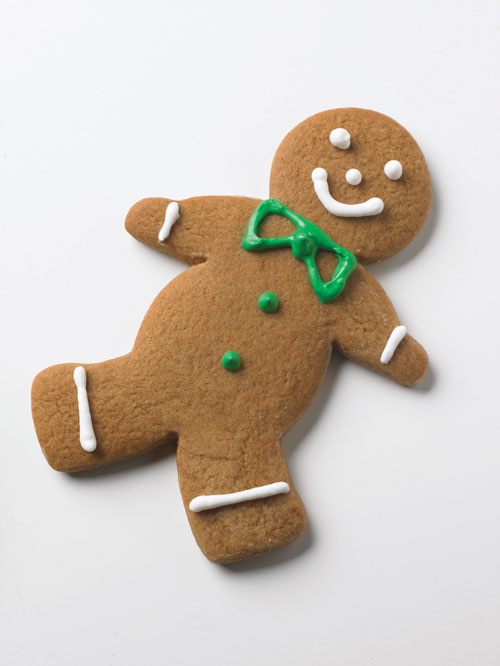 Fingerplay:Stir a bowl of gingerbread (pretend to stir)
Smooth and spicy brown
Roll it with a rolling pin (pretend to roll dough)
Up and up and down
With a cookie cutter (imitate)
Make some little men
Put them in the oven (imitate)
'Til half past ten! (pretend to look at watch)
Early Literacy Aside--Example: Rhyming is one way that children learn to hear the smaller parts of words, also called phonological awareness. Talking about the words that rhyme as you say rhymes with your children will better prepare them to read when they begin to sound out words in school. Adding motions makes it more fun!
Fingerplay:Stir a bowl of gingerbread (pretend to stir)
Smooth and spicy brown
Roll it with a rolling pin (pretend to roll dough)
Up and up and down
With a cookie cutter (imitate)
Make some little men
Put them in the oven (imitate)
'Til half past ten! (pretend to look at watch)
Early Literacy Aside--Example: Rhyming is one way that children learn to hear the smaller parts of words, also called phonological awareness. Talking about the words that rhyme as you say rhymes with your children will better prepare them to read when they begin to sound out words in school. Adding motions makes it more fun!
Submitted by Amy Cook, Henrico County (VA) Public Library--Tucahoe Area Library
Bear Went Over the Mountain--Rhyming Song
Song: The Bear Went Over the MountainThe bear went over the mountain, the bear went over the mountain The bear went over the mountain, to see what he could see. And what do you think he saw? And what do you think he saw? He saw a goat in a boat, he saw a goat in a boat. He saw a goat in a boat, That is what he saw.
Go through the song.
Early Litearcy Aside--Example: Rhyming is an important part of phonological awareness. It helps children break down words into smaller sounds and identify similar sounds in different words.This skill will help them when they sound out words to learn to read. Re-sing the song putting up different felt figures (skunk in a trunk) and allow the children to tell you what they see.
Early Literacy Aside--Empower: You can sing this song with any rhyming words. Work together with your child to create another verse. Don't be afraid to use nonsense words! Submitted by Erin Rogers, Henrico County (VA) Public Library--Gayton Branch
A Good Day by Kevin Henkes
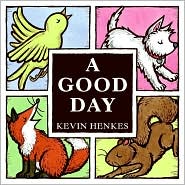
Train Goes Clickety-Clack by Jonathan London

Feathered Friends Storytime Plan
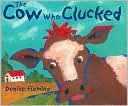
Feathered Friends Storytime Plan
Submitted by Donna Johnson, Sioux City (Northwest Library Service Area, Iowa) Public Library
Babies Everywhere Storytime Plan

Babies Everywhere! for Two and Three-Year-Olds Submitted by Debbie Stanton of Kalona (Southeast Iowa LSA) Public Library
Little Red Hen
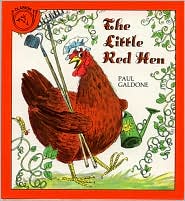
ReadTheLittle Red Hen. As your read the repeated phrases, "Not I," said the dog;"Not I," said the cat; "Not I," said the mouse, run your finger under those words as you say them.
Early Literacy Aside--Example: Running your finger under some of the words helps your child understand that it is the words you are reading, not the pictures. Researchers have found that even for four year olds, 95% of their attention is on the pictures. By pointing you help draw their attention to the text. This helps develop print awareness.
Mouse Shapes by Ellen Walsh

Read the book Mouse Shapes by Ellen Walsh.
Early Literacy Aside--Example: As I read the book, you'll notice how we can combine talking about shapes as we also talk about what is happening in the story. Helping children see shapes is the beginning of letter knowledge.
Craft: Have various shapes cut out, the same ones used in the book. Each PERSON gets a blank sheet of paper. Using shapes, they make a picture. Encourage the adults to talk about all the shapes and also about what they are making with the shapes, both their own picture and their child's. The adult or child can write the child's name on their the paper and find some of the shapes in the letters.
Early Literacy Aside--Empower: Playing with shapes is one way to help your child see shapes in letters and to later identify the letters. For example, this is an N the first letter in your name. See how there is a triangle shape between the lines? You will notice many opportunities during your day to talk with your children about shapes.
Blue Sea by Robert Kalan
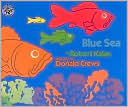
Read the book Blue Sea by Robert Kalan. Use the flannel board to retell the story. You put up the pieces and have the participants retell the story as you put up the pieces. You may say a few words to prompt them.
Early Literacy Aside--Example: Giving children an aid, like the flannel board pieces, helps them remember the story and the order. This helps them develop their narrative skills which both helps them later understand what they will read and helps them understand how stories work.
At the end of storytime, offer a handout (see below)
Early Literacy Aside--Empower: Today I have a handout for Blue Sea for you. You and your children can color and cut out the pieces and then retell the story together. Remember that telling stories will help children later in school when they have to write their own stories.
Patterns for flannel board pieces
Handout for retelling at home
Submitted by Saroj Ghoting
Something from Nothing by Phoebe Gilman
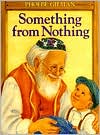
Early Literacy Aside--Explain: One of the best things you can do to help your child be ready to learn to read is to share enjoyable times as you share books. Children who have these positive experiences around books are more likely to stick with learning to read when it comes time for them to learn to read. That enjoyment, called print motivation, goes a long way! Today I'll point out a couple ways you can support enjoyable reading experiences.
Before reading the book Something From Nothing by Phoebe Gilman:
Early Literacy Aside--Example: This is one of my favorite books! It's very clever and I like to watch the mouse story down below here. Adults, when you are reading a book you especially like, let your child know how much you like it and what you like about it. This supports print motivation, the enjoyment of reading.
Read the book Something from Nothing by Phoebe Gilman.
Storytime Plan: Growing Big: Two and Three Year Olds
Five Little Ducks (song) from Rise and Shine by Raffi

Sing the song Five Little Ducks (on Rise and Shine by Raffi)
Early Literacy Aside--Example: There are many songs that have children say the sounds that animals make. Saying animal sounds is the beginning of being able to hear the smaller sounds in words, which later helps them sound out words when they learn to read!
Eensy Weensy Spider (song) from Mainly Mother Goose by Sharon Lois & Bram
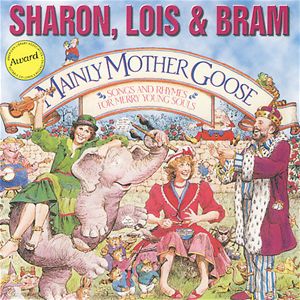
Song Introduction: Our next song is Eensy Weensy Spider on this CD called Mainly Mother Goose by Sharon Lois and Bram. In this version, there is the eensy weensy spider and then next door there is a big, fat spider, and then a teensy weensy spider. Let's listen to the song first and then we'll act it out together.[Talk about a big fat spider and what it might look like, have them try to be a big fat spider. Do the same with a teensy weensy spider, using just your fingers. Have them try it themselves. You can use synonyms for big, fat like huge, enormous, and then for teensy such as tiny, tiny, minute.]
Early Literacy Aside--Example: Adults, by using the movements can help children understand what the words mean. Talking with your children about opposites and using more similar words--all these activities help to develop your children's vocabulary which will later help them understand what they read.
Blue Sea by Robert Kalan
Read the book Blue Sea by Robert Kalan.
Early Literacy Aside--Example: Blue Sea uses the concept of size. You can build your child's vocabulary by talking about different words related to size, like big, bigger, biggest which compare sizes. Also offer words like huge, gigantic, humongous.
Early Literacy Aside--Empower: There are many opportunities throughout the day where you can add new words related to size, such as thin, fat, hard, soft, etc. Exposing your children to new words builds their vocabulary which will help them later understand what they read.

